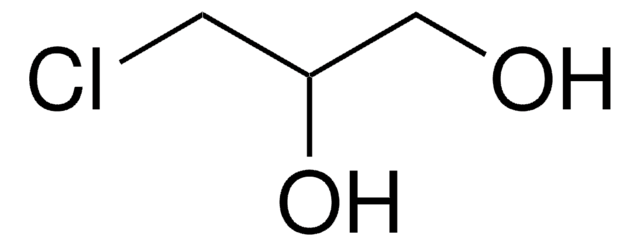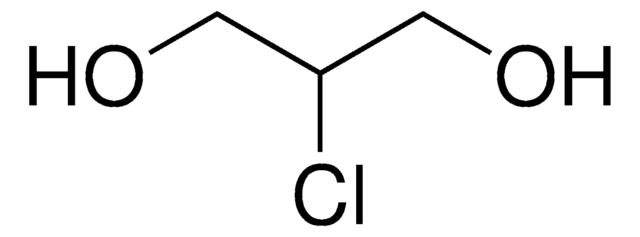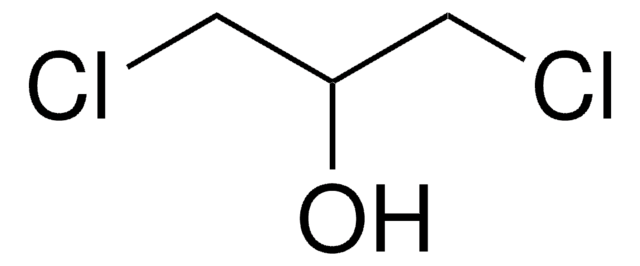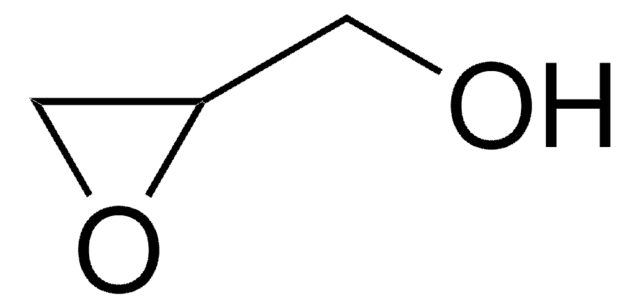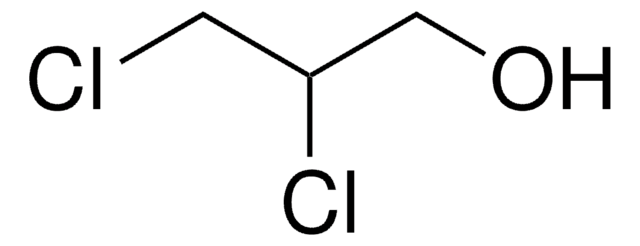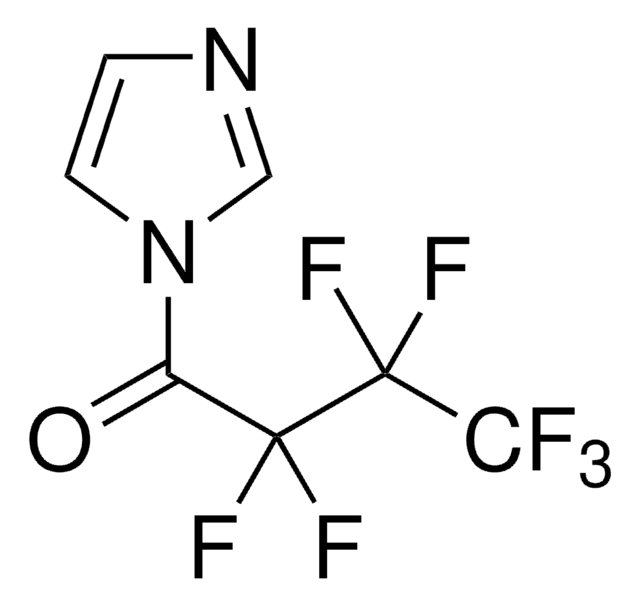32406
(±)-3-Chloro-1,2-propanediol
analytical standard
Sinonimo/i:
α-Chlorohydrin, α-Glycerol chlorohydrin, α-Monochlorohydrin, 3-MCPD
About This Item
Prodotti consigliati
Grado
analytical standard
Livello qualitativo
Tensione di vapore
0.04 mmHg ( 25 °C)
Durata
limited shelf life, expiry date on the label
tecniche
HPLC: suitable
gas chromatography (GC): suitable
Indice di rifrazione
n20/D 1.480 (lit.)
P. ebollizione
213 °C (lit.)
Densità
1.322 g/mL at 25 °C (lit.)
applicazioni
cleaning products
cosmetics
food and beverages
personal care
Formato
neat
Stringa SMILE
OCC(O)CCl
InChI
1S/C3H7ClO2/c4-1-3(6)2-5/h3,5-6H,1-2H2
SSZWWUDQMAHNAQ-UHFFFAOYSA-N
Cerchi prodotti simili? Visita Guida al confronto tra prodotti
Descrizione generale
Applicazioni
Prodotti consigliati
Avvertenze
Danger
Indicazioni di pericolo
Consigli di prudenza
Classi di pericolo
Acute Tox. 2 Inhalation - Acute Tox. 3 Oral - Carc. 2 - Eye Dam. 1 - Met. Corr. 1 - Repr. 1B - Skin Irrit. 2 - STOT RE 1 - STOT SE 1
Organi bersaglio
Kidney, Testes
Codice della classe di stoccaggio
6.1A - Combustible acute toxic Cat. 1 and 2 / very toxic hazardous materials
Classe di pericolosità dell'acqua (WGK)
WGK 3
Punto d’infiammabilità (°F)
235.4 °F - closed cup
Punto d’infiammabilità (°C)
113 °C - closed cup
Scegli una delle versioni più recenti:
Possiedi già questo prodotto?
I documenti relativi ai prodotti acquistati recentemente sono disponibili nell’Archivio dei documenti.
I clienti hanno visto anche
Il team dei nostri ricercatori vanta grande esperienza in tutte le aree della ricerca quali Life Science, scienza dei materiali, sintesi chimica, cromatografia, discipline analitiche, ecc..
Contatta l'Assistenza Tecnica.